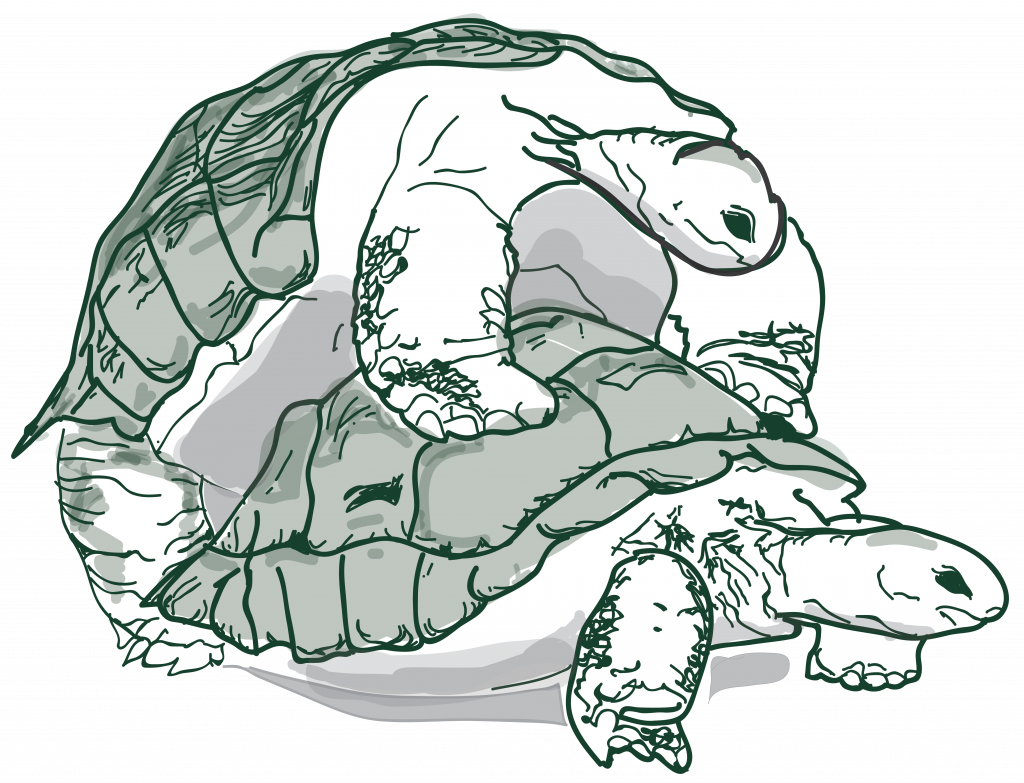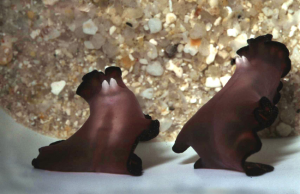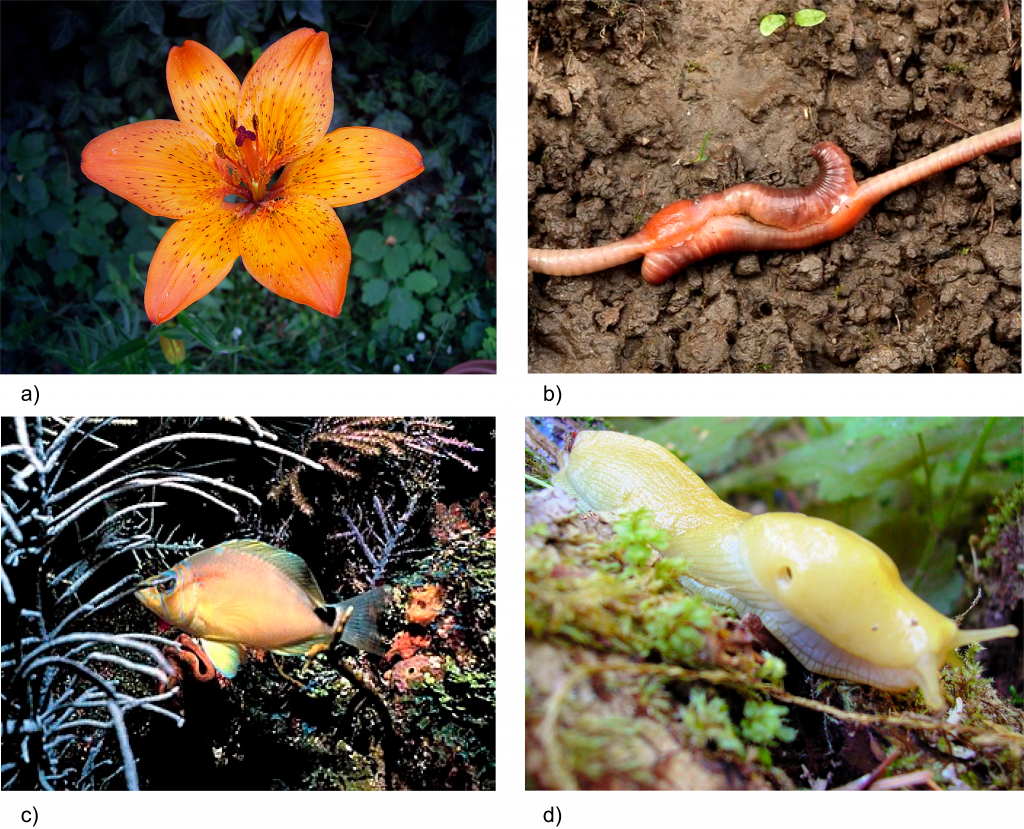8.10 Understanding Hermaphroditism
You can probably imagine a few benefits of hermaphroditism (having the ability to produce both eggs and sperm). For one, any individual could mate with any other individual in the population (this is outcrossing), expanding the pool of potential mates. Also, if a hermaphrodite could not find any mate, it could fertilize its own eggs (this is selfing). Furthermore, selfing hermaphrodites save a lot of energy that would otherwise be spent in seeking and acquiring a mate.
So why aren’t more species hermaphrodites? There are several proposed explanations about why hermaphroditism is not more common. One is that male and female mating strategies are distinct (see chapter on sexual selection). It could be that there is an evolutionary advantage to fully pursuing female sex strategies or male sex strategies, and that compromising between the two is disadvantageous. Basically, this is a “specialist versus generalist” argument, in which the specialists are dioecious (meaning they only have one sex per individual) and the generalists are hermaphrodites. Indeed, some of the odd behavioral adaptations of hermaphrodites (see penis fencing flatworms below) are evidence of the dueling selective pressures in hermaphrodites.

Biology is Sexy
Penis Fencing Flatworms
The above video shows two ocean-dwelling hermaphroditic flatworms fighting to inseminate the other by stabbing the other with their penises (called penis fencing). In the end the one who gets stabbed has to wander off to find food – while the other gets to go in search of another mate.

[1]Why do these worms have this behavior? Researchers who have explored this behavior suggest that the costs and benefits of being the sperm recipient, versus the sperm donor, affect the way penis fencing flatworms engage in these battles. In short, the sperm recipient (whose eggs are fertilized) has higher energetic costs associated with the reproductive event because they are providing the nutrient-rich egg. So when all else is equal, there is an advantage to being the one to inseminate, while avoiding being inseminated. However, one group of researchers from Florida researching a hermaphroditic sea slug found that when one slug was food deprived, the benefit to the food-deprived slug of being the inseminator was even greater, and in that case, the well-fed slug was best off being inseminated.
Another suggestion for the evolution of separate sexes has to do with organelles (or small compartments within a cell) that contain DNA (mitochondria in plants and animals and chloroplasts in plants). Organelles are inherited only through the egg. Thus, all of your mitochondria are inherited from your mother (sperm do not contribute mitochondria to the embryo). For a gene in the mitochondrion or chloroplast, sperm production is an evolutionary dead end! Therefore genes have evolved in the mitochondria and chloroplasts that cause an organism to focus its reproductive efforts on egg production.
Imagine a landscape of organisms in which there has been this type of pressure to produce only eggs (no sperm). In this environment, if there were a lone variety that focused its reproductive efforts on sperm production, that organism would do very well!Negative frequency-dependent selection is when there is an advantage to being a rare type in a population. Thus, if there is an excess of egg-producing organisms, organisms that disproportionately produce sperm will be at an advantage. One of the hypotheses for the evolution of dioecy from hermaphroditism involves negative frequency-dependent selection and the evolutionary advantage of specializing in a rare gamete type in this situation.
Check Yourself
Below are examples of simultaneous hermaphrodites.

- Image: https://commons.wikimedia.org/wiki/File:Mating_Pseudobiceros_bedfordi.png ↵
- https://commons.wikimedia.org/wiki/Lilium#/media/File:LiliumBulbiferumCroceumBologna.jpg ↵
- https://upload.wikimedia.org/wikipedia/commons/f/f6/Mating_earthworms.jpg ↵
- https://commons.wikimedia.org/wiki/File:Butter_hamlet_fish.jpg ↵
- https://upload.wikimedia.org/wikipedia/commons/thumb/5/51/Banana_slug_in_the_Hoh_Rainforest.jpg/800px-Banana_slug_in_the_Hoh_Rainforest.jpg ↵

